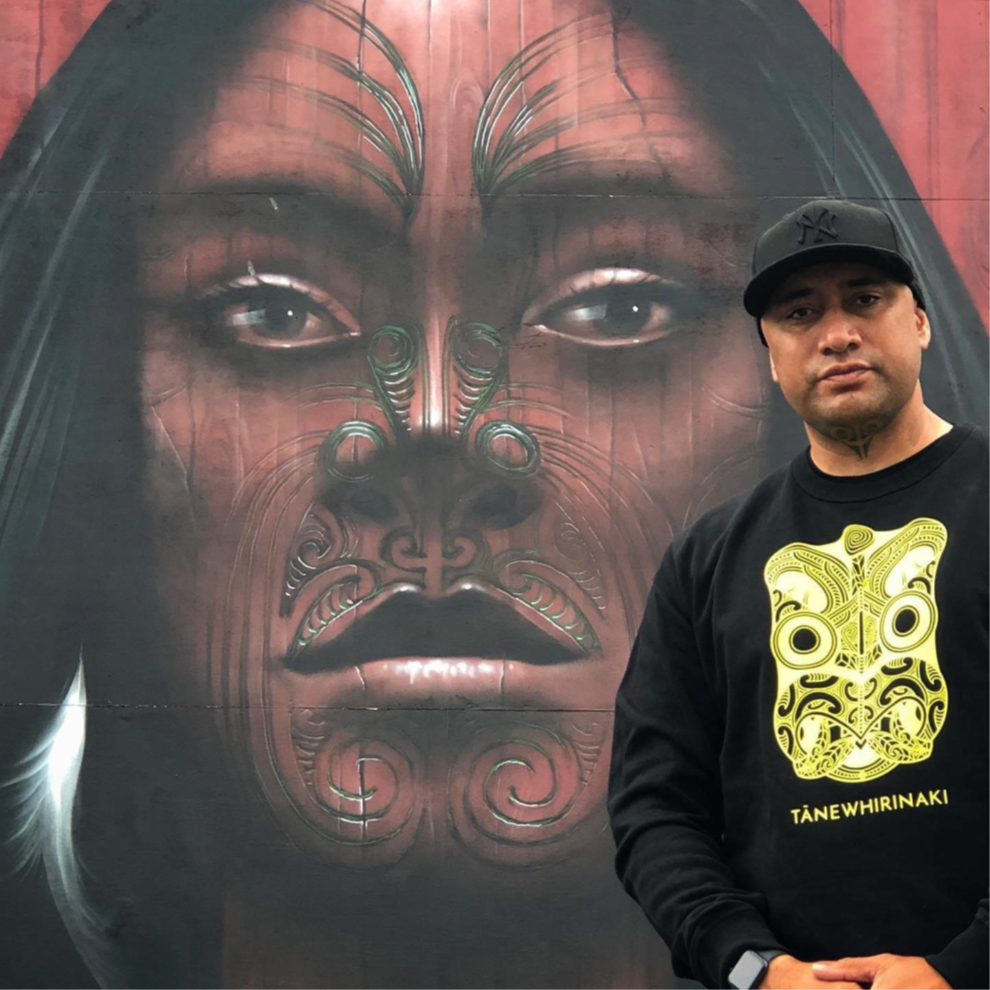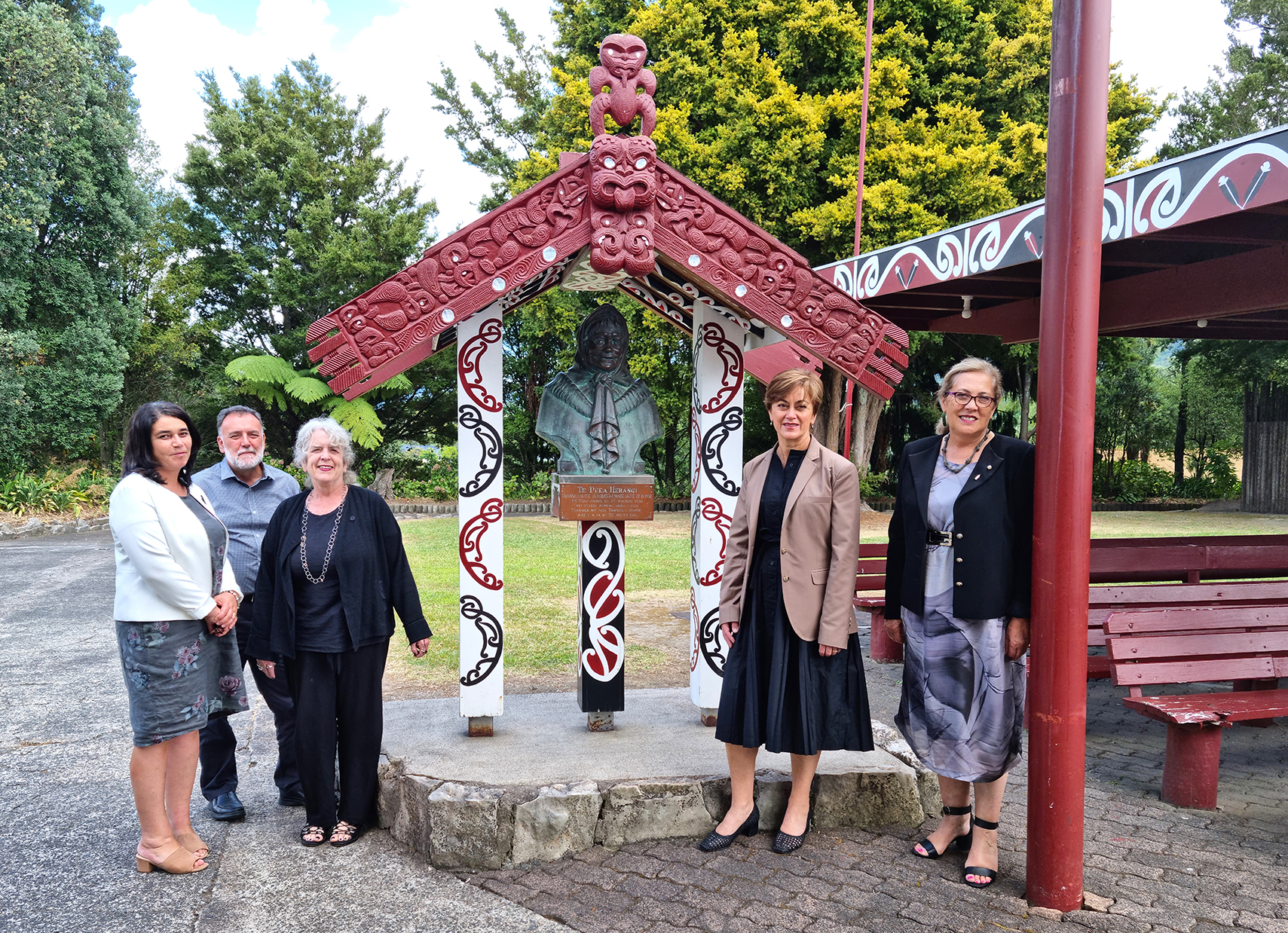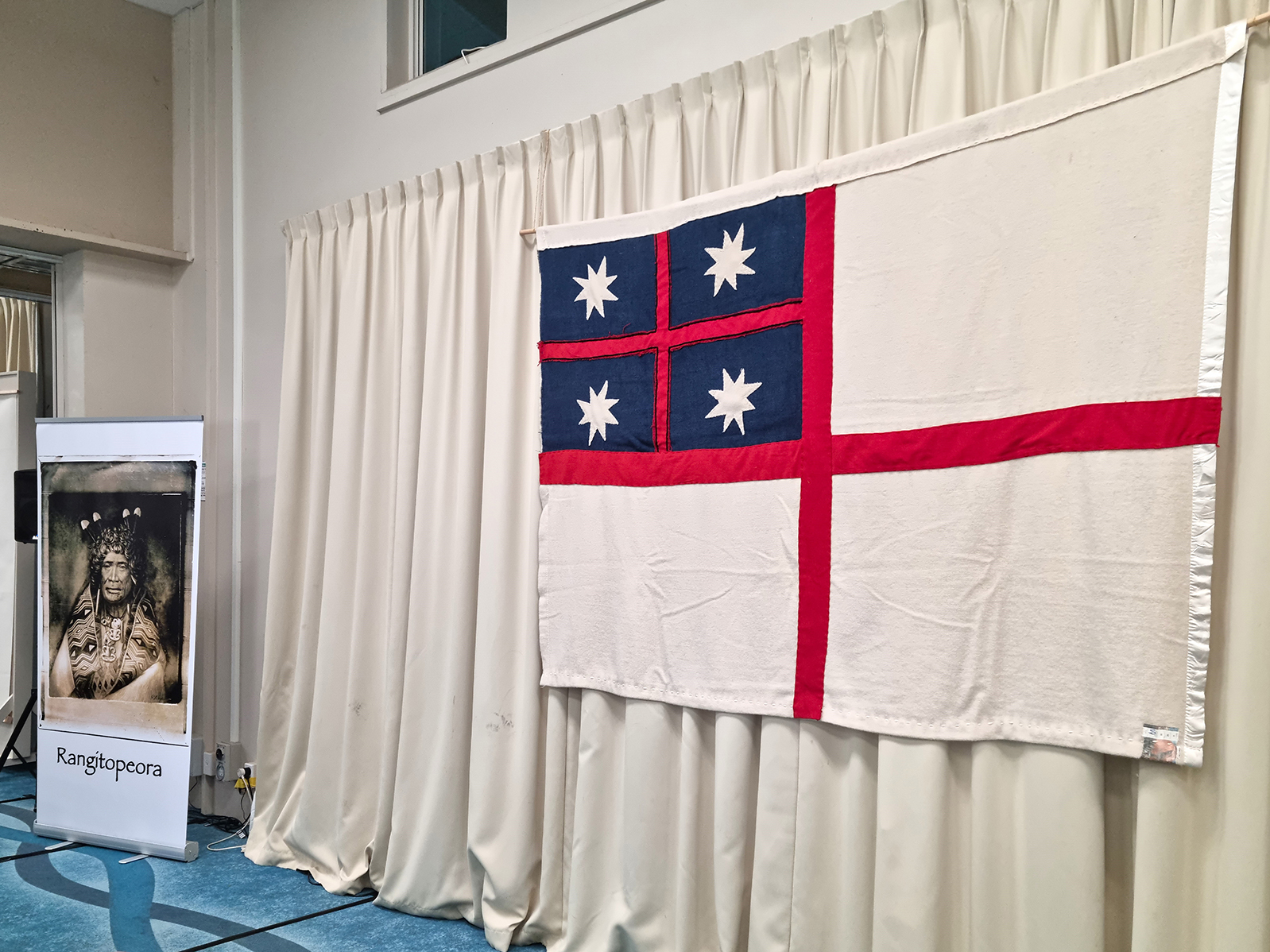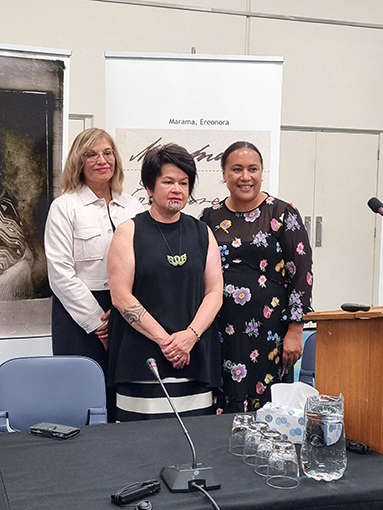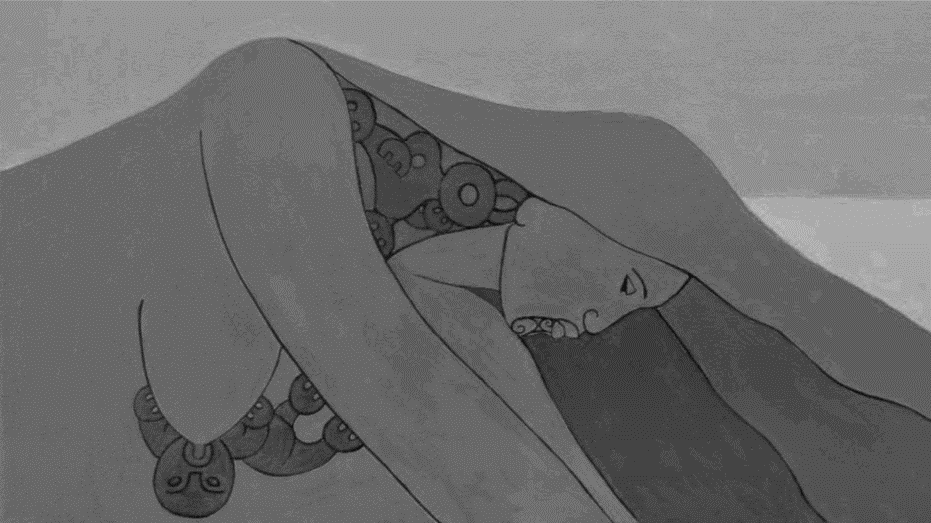What does ‘mana wāhine’ mean?
He aha te whakamaramatanga o te ‘mana wāhine’?
‘Mana wāhine’ is at the heart of this Waitangi Tribunal inquiry. Witnesses in the tūāpapa hearings used the term to describe the inherent strength, power, and authority possessed and exercised by wāhine. They described mana wāhine as something uniquely Māori, with its source in the atua, in wairua passed on from tūpuna, in whakapapa, in whenua, and in te whare tangata. Witnesses also explained how mana is reinforced by whānau and hapū relationships, mātauranga, and the proper exercise of tikanga responsibilities.
Witnesses used the term ‘mana wāhine’ to reclaim and reaffirm the prestige and standing of Māori women within their communities, both historically and in contemporary contexts. They did so in an effort to challenge patriarchal norms and the imposition of colonial ideologies.
Witnesses also used ‘mana wahine’ as a title for a significant wahine (i.e. describing a tūpuna as ‘a mana wahine’). Several witnesses emphasised, however, that gender was not a determinative feature of mana in pre-colonial Māori society. Indeed, some noted that the term may not have been used at all before colonisation as it was simply assumed that all people, regardless of gender, had mana.
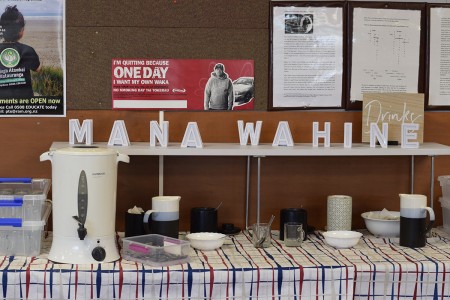
Wharekai at Terenga Parāoa Marae, Whangārei
Key witnesses who gave evidence
Professor Leonie Pihama (doc A19) surveyed research about the ideas and ideologies that have shaped how Māori women have lived in Aotearoa – from the Māori cosmologies and mātauranga of pre-colonial times, to colonial discourses about gender, race, and class introduced at European arrival. Professor Pihama discussed the use of ‘mana wāhine’ as a theory in an academic and research context, by which Māori women can ‘reclaim our place … within Te Ao Māori’ and examine the impacts of colonisation from the distinct perspectives of indigenous women.
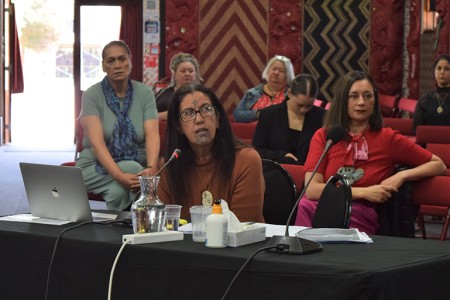
Professor Leonie Pihama giving evidence at Ngā Hau E Whā, Christchurch
Moe Milne (doc A62) reflected on the importance of the concept of ‘mana wāhine’ to restore the confidence of wāhine in their own power and roles. Ms Milne described ‘mana wahine’ as an inner strength that Ngāti Hine wāhine inherit as a ‘birth right’ from their tūpuna, particularly Hine-ā-Maru.
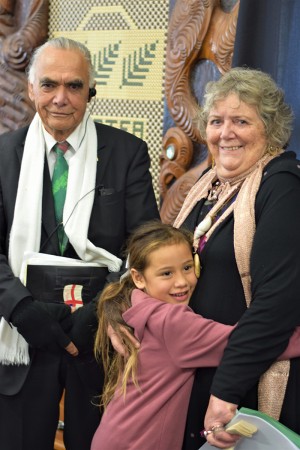
Moe Milne pictured with Hirini Henare (left) and a mokopuna
Whakataukī
- Me aro koe ki te hā o Hineahuone – Pay heed to the dignity of Māori women. (Professor Leonie Pihama, doc A19, p 5)(external link)
- Te mana o te wāhine no, mai te rangi ki te whenua. (Materangatira Lily Porter, doc A16(a), p 3)(external link)
- Ko te mana o te wāhine e ki a nei ko ia te whare tangata ki te ao Māori. Without women there is no humanity. (Whirimako Black, doc A84, p 5)(external link)
- Kotahi anō te tupuna o te tangata Māori, ko Ranginui e tū nei, ko Papatūānuku e takoto nei. Without male and female, there can be no whakapapa. (Ani Mikaere, doc A17, p 3)(external link)
- Ko te ara ō te Tāne, ki te ao marama kei ahau, te wāhine. (Raiha Ruwhiu, doc A93, p 8)(external link)
- Mana wahine is something that is inherently within me and as a Ngāti Hine I know ‘ko te wairua e heke tonu ana I tō mātou tupuna, i a Hine-ā-Maru’. I enact what I know is a tuku iho. (Moe Milne, doc A62, p 10)(external link)
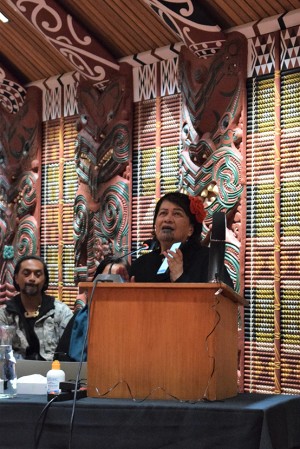
Whirimako Black giving evidence at Te Mānuka Tūtahi Marae, Whakatāne
What witnesses said
- “[T]he concept of mana wāhine, like mana, is a uniquely Māori construct that has no exact comparable meaning in other cultures or intellectual traditions. It has iwi and hapu nuances and has been uniquely framed within Māori culture, law, politics, and history. It is a text in the context of a uniquely Māori reality.” (Dr Moana Jackson, doc A85, p 5)(external link)
- “This personal notion of mana naturally inhered in both men and women. It is the birthright which intimately marks every mokopuna as being ‘special and worthy,’ and is conceptualised nowadays in the terms ‘mana wāhine’ and ‘mana tāne.’ It is apposite to note at this point that the terms do not feature as part of the historical record in Ngāti Kahungunu. Instead there was simply a whakapapa recognition of the mana of all mokopuna – what might in fact be termed ‘mana mokopuna.’” (Dr Moana Jackson, doc A85, p 12)(external link)
- “It should be noted that the very term ‘mana wahine’ is a product of the ‘patrifying’ of Māori thought and practice. Our tūpuna are most unlikely to have felt the need to refer to ‘mana wahine’ because it was simply the case that all people, female and male, had mana. It is only because the colonists regarded ‘mana’ as an exclusively male characteristic—and because of the enthusiasm with which some Māori men embraced that belief — that it has become necessary to identify ‘mana wahine’ as a phenomenon.” (Ani Mikaere, doc A17, p 14)(external link)
- “Mana wahine is already part of our lives. All Hine-ā-Maru descendants are imbued with her wairua. It means having self-confidence, leadership qualities, strategic thinking and it is a trait of leading from behind because it is about empowering others to have a role. We need to regain the confidence to tune into our inner powers. By us speaking out about mana wahine as an intrinsic thing, by speaking with great affection about our ancestress Hine-ā-Maru, my hope is that it then encourages Ngāti Hine uri to connect with our stories and knowledge. I hope that it encourages others to also connect with their own hapū stories and knowledge and that through this, wāhine reclaim their place in this world, and that they are supported by men to do so.” (Moe Milne, doc A62, p 30)(external link)
- “Before te Tiriti, gender did not dictate the mana of a person, our tribal stories tell us that whakapapa, ability and accomplishments were the determiner of a person’s mana.” (Moe Milne, doc A62, p 11)(external link)
- “When I think of Mana Wahine, I think of ancestral connections. I recall my connections to the mountains, the rivers, the oceans, to our human ancestors, to our ancestral territories. When I think of Mana Wahine, I think of the strength and power of our tūpuna (ancestors) who held key roles in the defence of our lands, language and culture. When I think of Mana Wahine, I think of those who today lead many of the grassroots developments that are central to our cultural regeneration movements. When I think of Mana Wahine, I am thankful for the deep ancestral knowledge and practices that remain intact to guide and inform us on our journeys. When I think of Mana Wahine, I think of the deep-seated connections that ancestors before us and ancestors yet to come have to these places, these sacred spaces, these people. I am deeply grateful for those who have held to those sacred relationships generation after generation so that I am able to stand as their descendent and as the mother, auntie and grandmother of generations yet to come.” (Professor Leonie Pihama, doc A19, pp 4-5)(external link)
- “A major thrust in the wider kaupapa Māori movement has been the reassertion of being Māori and the validity and affirmation of our language, cultural ways, practices, protocols, ceremonies, knowledge, in ways that do not reproduce colonial systems of thought, power, social hierarchies and structures. The assertion of Mana Wahine is a part of that. Mana Wahine provides us with a culturally defined basis from which to not only reclaim our place as Māori women within Te Ao Māori, but it also provides grounding for distinctively Indigenous women’s theory and analysis of the impact of colonisation and the structures that reproduce colonising practices within Aotearoa.” (Professor Leonie Pihama, doc A19, p 14)(external link)
- “Mana wahine is informed by tikanga, mātauranga and te reo Māori and it is through this lens that we are able more deeply come to understand issues faced by Māori women and in doing so to reclaim and reassert our place on our own lands. This is both a movement and a theory that has at is centre the resurgence and reaffirmation of the mana of Māori women, past, present and future. This is particularly critical in a context whereas Indigenous women we live with the impacts of imposed colonial heteronormative gender ideologies that seek to deny the sacred standing that is inherently ours.” (Professor Leonie Pihama, doc A19, p 15)(external link)
- “The mana of wāhine comes from the heavens and te Papatūānuku. It is in us, but we do not realise it until we live it. For many wāhine today, they do not believe that it is in them and that is the problem.” (Materangatira Lily Porter, doc A16(a), p 3)(external link)
- “When you hear a waiata that imbues tangi, aroha, mamae, matauranga, relationships, connection, kai, korero, pukana and passion into your psyche – this is mana wahine!” (Aorangi Kawiti, doc A24(a), p 8)(external link)
- “‘Mana wahine’ means the mana attributable to wahine through descent, experience, expertise, wananga and achievement; that which wahine are able to achieve and be; that which our people know and believe to be true.” (Aorangi Kawiti, doc A24(a), p 9)(external link)
- “We recognise that all mana is sourced from the Atua. For wāhine Māori, the sources of this mana (mana wāhine) include: te ara uwha o Tahu (the heavenly female path of Tahu), the primal parent Papatūānuku (the Earth Mother, and creator of all life) and other female deities.” (Jane Ruka and Te Miringa Huriwai, doc A53(a), p 3)(external link)
- “Mana wahine means that as a human being I have responsibilities that are only possible because I am a woman.” (Patricia Tauroa, doc A60, p 15)(external link)
- “In the creation stories the activities of ancestors in ancient times celebrated the ‘mana’ of Māori women and is evidence of the deeply rooted attachment to the land. The creation story represents the central axis from which the Māori perceived all living things came. There was Papatūānuku, from whose breast sprang plants, trees, animals, fish and fowl all of which provided sustenance … Aside from the traditional role of Māori women moreover is the reminder of the matrilineal descent coming from Papatūānuku.” (Dr Ella Henry, doc A63, p 7)(external link)
- “[M]ana wahine endures. The whare tangata endures, and so the people endure. Wahine are the house of the generations. Enshrine her mana for the benefit of the people. Maku ra te orangatanga o te ira tangata mo ake tonu atu. Kei toku kaiure te kakano, kei toku puwere te kohanga e pao ai te uri. Haramai te mana atua, whano whano, taiea ki te uwha. Ka po, ka ao, ka ea, ka awatea Tihei mauri ora ki a tatou katoa.” (Dr Ngahuia Murphy, doc A67, p 13)(external link)
- “The key to understanding Mana Wahine is whakapapa, which means more than genealogy. It includes all the activities of our tipuna, all the taonga which they have handed into our care. It includes a genealogical relationship with the universe and all living things in it. It includes a definition of all one’s human and social relationships. It defines for women our place in the world of people and our relationship to our turangawaewae, the lands of our ancestors and to the waters, mountains, and places where their spirits are imbued.” (Donna Awatere-Huata, doc A20, pp 7-8)(external link)
- “Mana Wāhine is grounded upon the belief and value systems of each hapū and whānau and how they teach, practise and pass down that cultural, traditional and institutional knowledge to successive generations.” (Te Ringahuia Hata, doc A30(b), p 5)(external link)
- “Mana wāhine in its simplest definition refers to the inherent uniqueness, strength, power, influence and authority that is derived not only through whakapapa but to our potentiality.” (Paula Ormsby, doc A55, p 4)(external link)
- “We [women] fulfil a unique place within our societal structures; that simply would cease to function without the necessary presence of mana wahine. It is not mana wahine alone that is necessary, but rather it acts in concert, conceptually, with other elements of our collective composition.” (Dayle Takitimu, doc A96, p 6)(external link)
- “Mana wāhine is how we were. It is how we should all be thinking. Mana wāhine is how you live. There is value in knowing that a tūpuna loved you. What is important is that we don’t just push it to the back of our minds, as though it is knowledge that we have read in a book, but that we live in accordance with mana wāhine.” (Genevieve Ruwhiu-Pupuke, doc A102, p 2)(external link)
- “He aha tēnei te ‘mana wāhine’ whakamarama mai? … He maha ano tenei whakautua ka pa ki te Kaupapa ka eke ia ka kite a ia ka mohitia ia. Ko te tahi atu kia au ko te whakaputa uri mona!!” (Hera Black-Te Rangi and Mareta Taute, doc A116, pp 15-16)(external link)
- “Mana Wahine – Mana Atua – female godliness – the cosmology of Māori women – our presence in the beginnings of the universe as atua, as having powers and responsibilities to that universe. Mana Atua is integral to the Rangatiratanga of Māori women.
Mana Wahine – Mana Whenua – the rights to exercise Mana whenua, to inherit lands, to assert leadership, to hold a place in whakapapa. Also integral to the Rangatiratanga of Māori women.
Mana Wahine – Mana Tangata, of attributing Mana to women as Rangatira, as the whare tangata and for their services to the whanau and Hapū. Also central to the Rangatiratanga of Māori women.
Mana tamariki – the inherent respect for children – and the equal treatment that was given to girls as well as boys.” (Donna Awatere-Huata, doc A20, p 7)(external link)
- “He aha tēnei mea te Mana Wahine? Mai rānō te Mana tō te Wahine nō tuawhakarere, mai te Whaea tuatahi te tinana nōna te uha o kurawaka i tākoha mai hei waka kawe uri! Nō Ngā Atua katoa o tēnei Ao hoki he wāhanga i tākoha mai heoi nō Io te Matua Kore te hiko kia oho te awe nōna i tākoha mai. Ahakoa rongonui rawa a Tane mō tēnei ahuatanga ko tōnā te hiahia te hā i tākoha mai, katahi rā ko tōnā koha nunui tōnā aitanga ko te iratanga nō rāua tahi ko Hineahuone. Heke iho ki ā mātou.
Heoi he whakapapa tērā o taua Mana he nui ake ngā ahuatanga o te Mana tō te wāhine ināianei. Ae he waka kawe uri koinei te mea nui o te Ao nei. Mēnā kore kau he wāhine ko kore ko te Ira Tangata!
Heoi he puna mātauranga tō mātou, he puna roimata hoki. Mēnā ka huri koe ki te tirohia ki te hītori me āta tirohia ki te mahi o ō tātou kuia mā ngā māreikura ko tātou nei te Mana hei parahia i te huarahi mō tātou katoa!
He mea whakamutunga o tēnei patai hoki nā te hanga o tō mātou tinana o te Kopu he Whare tangata tō mātou. He pūmotomoto tō mātou kei waenga ēnei Ao mai te pōuriuri ki te whai Ao. He mana whakanoa tō te wahine mā tōnā hikoi noa. He mana hoki kia whakaoho i te Ao wairua kia tūwhera ai, kia wātea ai te aotea nā ko tōnā reo te reo tuatahi o te marae.” (Rangi Kipa and Christine Harvey, doc A147, pp 3-4)(external link)
"What is Mana Wāhine? The Mana of Women originates from ancient times, from the first Mother who gifted the female element at Kurawaka, the vehicle from which humankind originates! All the gods of this world gifted attributes however, it was Io the Parentless who provided the spark which awakened the soul that Io gifted. Although Tāne’s role in this event is well-known, what he gifted was his breath and then his progeny that Tāne and Hineahuone conceived. We descend from their offspring.
And so that mana has a lineage and several more aspects than the mana of women today.
Yes, what is most important is that it is the vehicle which created humankind. Humankind would not exist without women.
As a result, we are sources of knowledge and tears as well. One must consider carefully the history of the deeds of our female ancestors and supernatural beings for it was women who exercised the power to pave the way for everyone!
Finally, regarding this question, the female body has a womb which houses life. We have a fontanelle that sits between the world of darkness and the world of light. Women have the power to lift tapu by just walking. Women also have the power to awaken and open the spiritual realm by clearing the courtyard because the first voice on the marae belongs to women." (Rangi Kipa and Christine Harvey, doc A147(b), pp 3-4)(external link)
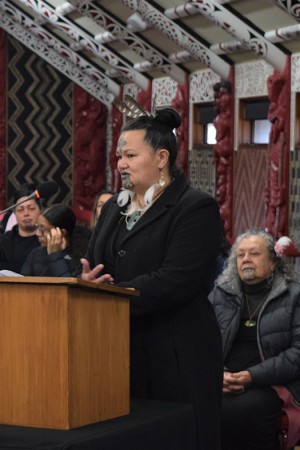
Christine Harvey giving evidence at Ngā Hau E Whā, Christchurch, September 2022
